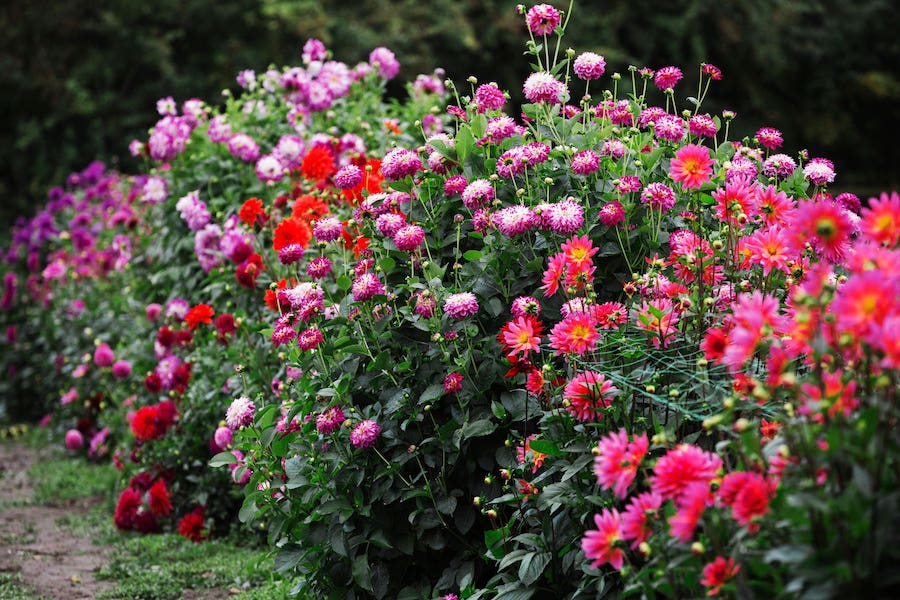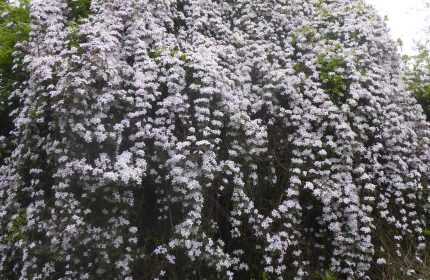5 late summer blooms to plant now
Here’s how to boost the flower power in your garden until early autumn
Whether it’s show-stopping summer bloomers in window boxes or beautiful borders with pollinators buzzing around pretty petals, we all want our flowering plants to make a lasting impression.
A joy to behold, so how can you keep these colourful blooms flourishing when their beauty starts to fade?
Here, Charles Carr, head of Hillier Wholesale Nurseries, suggests five fabulous flowering plants to bed now…
1. Heleniums

Sun-worshipping heleniums are easy to cultivate
“Sun-loving Heleniums add an abundance of colour, bursting from mid-summer through into autumn,” advises Carr.
As he points out, there are hundreds of varieties to choose from, from hot yellows and reds to vibrant oranges.
“Regular deadheading as they finish flowering will encourage future growth and longer spells of colour into autumn,” suggests Carr.
They can grow to be quite big, so he says taller varieties may benefit from staking: “They are easy to grow and thrive in most soil types, preferring full sun.”
2. Heliopsis

Heliopsis are pure nectar for pollinators
Heliopsis, or ‘fake sunflowers’ are available in a range of heights from 40cm to two meters, with three-inch double or single flowers of beautiful yellows and oranges, surrounding golden centre cones, explains Carr.
“They not only make impressive, colourful features in borders and beds, attracting an array of pollinators, but can also make for lovely cut flowers.
“They grow in clumps with branching stems that give a bushy habit, and the flowering period is between six and eight weeks.”
To encourage buds to form, he says to deadhead any spent flowers.
3. Penstemon

Penstemon petals offer a riot of colour in the garden
“These upright, bushy plants have tubular, trumpet-shaped flowers often flaring at the tip, surrounded by narrowed, linear green leaves,” notes Carr.
They are available in shades from deepest purple to delicate pink, as well as whites and blues, with some varieties being bi-colours combining two shades, and bring welcome colour to the garden, says Carr.
“This is a perfect plant for mixed and herbaceous borders and is loved by bees. Penstemon thrives in well-drained soil and are very tolerant to drought conditions.”
He recommends taking cuttings in summer and mulching annually with well-rotted manure or leaf mould – and feeding weekly in summer.
4. Crocosmia

Crocosmia, aka Coppertips, flower like a dream
Crocosmia come in a range of hot summer colours from orange to yellow and red.
Carr says they are a fantastic way of adding both height and colour and can be planted in conjunction with mid-height plants such as Lychnis ‘Jenny,’ Sidalcea ‘Elsie Heugh’ and peonies in front of them; then with low-growing plants such as geraniums, Erigeron ‘Kew Profusion’ and dianthus, at the front of the border.
“Originating from South Africa, they require fertile, moist but well-drained soil,” says Carr. “They grow from corms, planted around 8cm deep like bulbs.”
To avoid clumping, he says to plant them a few centimetres apart, then divide every three to five years to encourage better flowering.
5. Japanese Anemones

Anemones are a tall and graceful edition to the garden
“Japanese anemones boast cup-shaped pink or white flowers on the top of tall stems and can spread rapidly, so can be a great means of filling borders,” suggests Carr.
Stems can grow anything between 50 and 150cm, and they produce bountiful blooms with up to 30 flowers per corm being possible, says Carr.
“They have a blooming season of six to eight weeks, so add colour when many other perennials are beginning to die back.”
6. Care tips and planting partners
These plants are all easy to grow and require low maintenance, says Carr. They’ll require watering well while they establish, and occasional deadheading as required to extend the blooms. He recommends mulching in winter to aid growth the following season.

Miscanthus grasses can fill in the gaps between seasons
“For planting partners, balance among textures, height and structure can be provided by plants such as miscanthus, calamagrostis, sedums, ferns and grasses, while also adding interest for winter when the flowers have died back,” suggests Carr.
For even more colour, he says consider planting a mixture of different varieties and shades, or planting with red antirrhinums (snapdragons), dahlias, salvias and cannas.
The Press Association
Latest posts by The Press Association (see all)
- Dame Kelly Holmes: ‘Getting old is a privilege but ageing I don’t like’ - April 27, 2024
- 9 of the most iconic dance scenes in movies - April 27, 2024
- Why is melanoma on the rise? As new personalised ‘gamechanger’ skin cancer jab is tested - April 27, 2024
- King to resume public duties after positive cancer treatment - April 26, 2024
- 3 recipes to make from the new Hairy Bikers cookbook - April 26, 2024





















